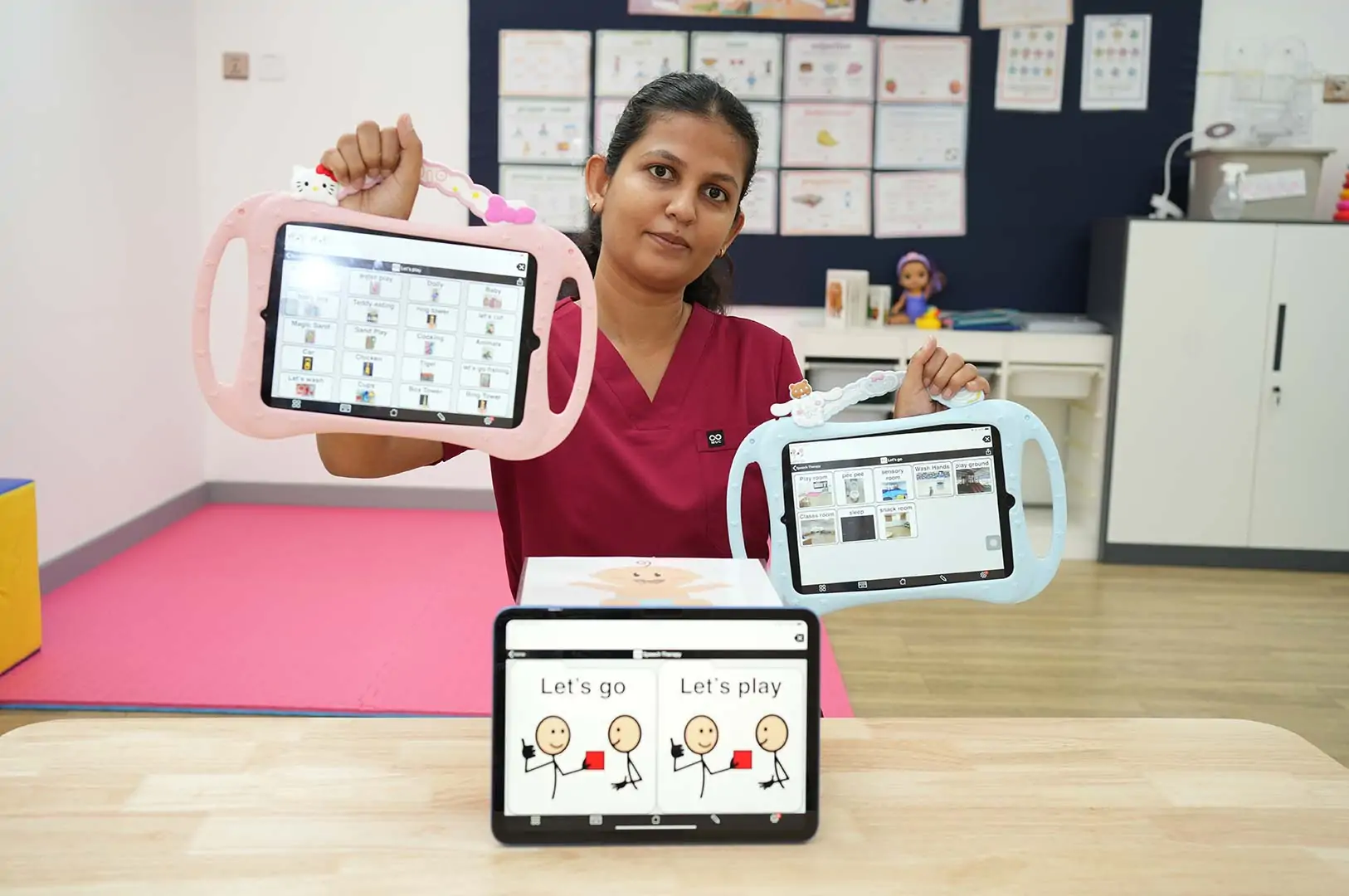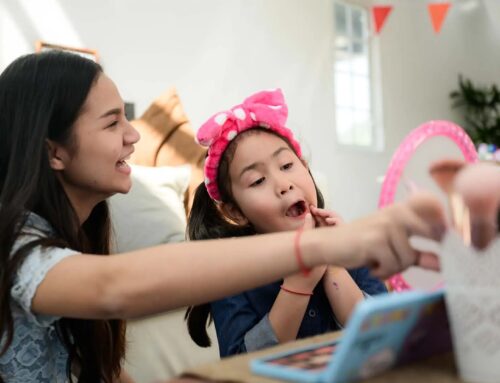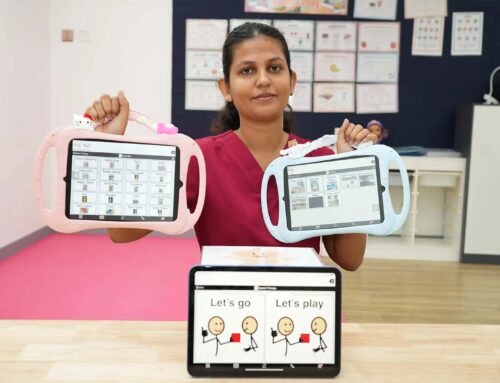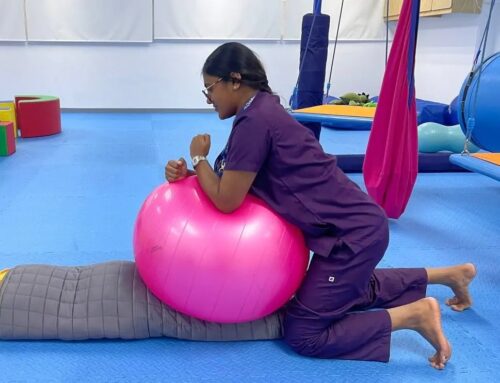October is International AAC Awareness Month, a great time to spotlight AAC at OrbRom Center and how it helps children communicate at home, at school, and across Phnom Penh. AAC (Augmentative and Alternative Communication) includes tools like picture symbols, speech-generating devices, and sign supports. Our goal is simple: match each child with the right system and coaching so real conversations can happen.
What AAC Looks Like at OrbRom Center
Our team begins with a functional communication profile, what a child wants to say, who they say it to, and where. We then trial low-tech boards and mid/high-tech apps to see what unlocks the most language. Families receive hands-on coaching so daily life (mealtimes, play, routines) becomes meaningful practice. When needed, we pair AAC with speech therapy and formal assessments to guide device selection and to track progress over time.
If you’re seeing a photo with this post, it likely reflects one of these everyday moments, partners modeling language, a child choosing symbols, or a team celebrating first words through AAC.
Why Start AAC Early
AAC doesn’t “replace speech.” In fact, evidence shows it can increase spoken language and reduce frustration. It supports vocabulary growth, attention, and social interaction. For a quick primer, see What Is Speech Therapy? and our AAC explainer Augmentative & Alternative Communication (AAC). Parents often ask how to help at home, begin with modeling, wait time, and frequent choices. These tips pair well with our guide on Communication & Language and everyday Autism Communication Strategies. Curious about devices? Explore How AAC Devices Help Non-Verbal Children Communicate.
How We Personalize AAC for Phnom Penh Families
Life here is multilingual and busy. We design AAC systems that fit Cambodian contexts—multiple languages, school expectations, and family routines. Symbols can reflect local foods, places, and classroom tasks so communication is useful from day one. We collaborate with teachers to embed AAC into circle time, transitions, and peer play. When your child’s plan is grounded in your real daily life, carryover improves and progress accelerates.
Getting Started with AAC at OrbRom Center
If your child is a late talker, minimally verbal, or struggling to express needs, AAC may be the bridge. We’ll help you decide what to trial, train you to model language naturally, and set a data-light tracking plan so you can see gains quickly. During International AAC Awareness Month, consider an initial consultation to map goals, pick a starter system, and plan for school collaboration in Phnom Penh’s classrooms.
Bottom line: AAC at OrbRom Center is about access, autonomy, and authentic connection, giving your child a dependable voice in every environment.






